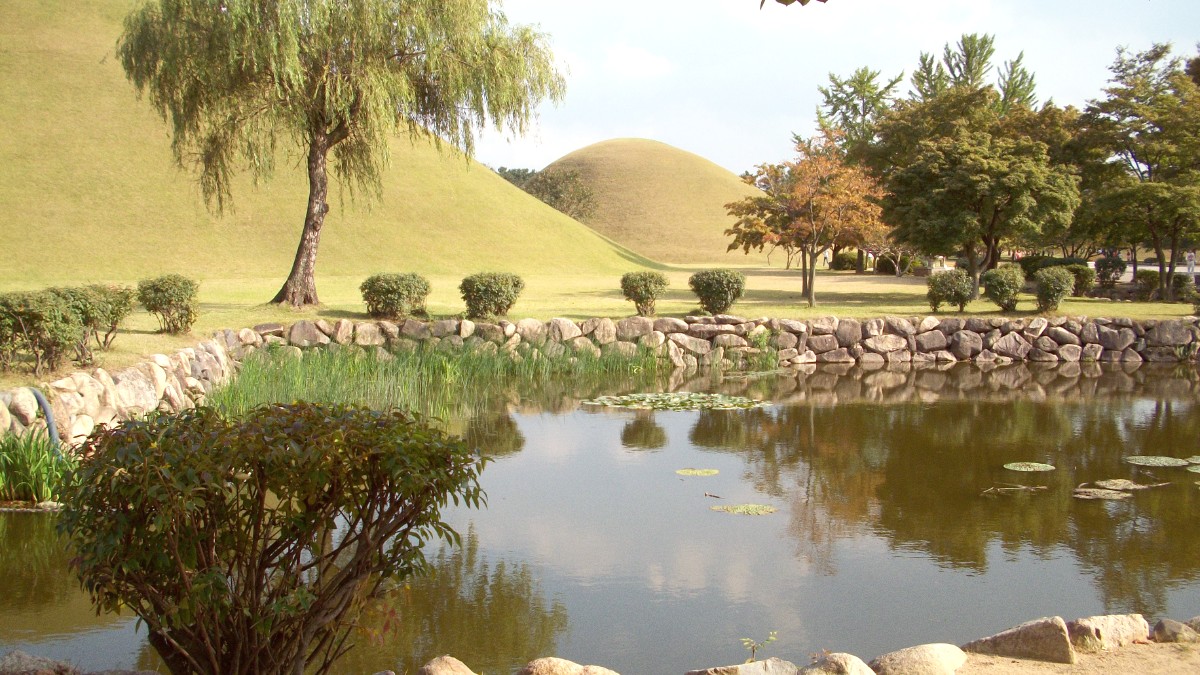
Gyeongsangbuk Do, South Korea
These are the essential stops for any Gyeongju visitor, offering deep historical and cultural context.
Plan your visits to make the most of your time among these historical treasures.
Check official websites for precise seasonal hours before your visit. Book attraction tickets here.
Visit at dusk or after dark for stunning illuminated reflections on the pond.
Go early in the morning for serene atmosphere and excellent soft light.
Best viewed at sunset, highlighting its ancient stones.
Explore this trendy street for unique photo opportunities blending traditional architecture with modern cafe culture.
Unique perspectives away from the main tourist hubs.
Gyeongju's museums are repositories of its rich past, offering deep historical understanding.
Houses an extensive collection of artifacts from the Silla Kingdom.
Highlights include the famous Emille Bell (Divine Bell of King Seongdeok).
Ornate golden crowns excavated from Silla tombs.
Showcases artifacts from archaeological excavations in the area.
Large complex with exhibition halls, observation tower, and performances.
Smaller galleries on Hwangnidan-gil show local art and crafts.
Gyeongju Arts Center hosts performances and exhibitions, including traditional Korean music and contemporary arts.
Gyeongju Traditional Culture Experience Center offers hands-on cultural activities and demonstrations.
Check Gyeongju National Museum's website for temporary special exhibitions on Silla history or culture.
The Gyeongju National Museum generally has free admission for its main exhibits, making it a valuable resource for history.
Gyeongju is a sprawling open-air museum, filled with remnants of its glorious past.
Beyond the main iconic landmarks, numerous other sites offer insights into the Silla Kingdom's heritage.
Explore the remnants of massive Silla structures and early Buddhist architecture.
Stroll through areas where traditional architecture blends with modern life.
Seek tranquility and historical insights at sacred places.
Visit sites that commemorate Silla's royal leisure and significant historical moments.
Gyeongju's natural beauty complements its historical grandeur, offering serene landscapes and recreational opportunities.
Bomun Lake Resort Complex features walking paths, cycling routes, and recreational facilities. Gyerim Forest is a small, picturesque forest for a peaceful stroll.
Namsan Mountain offers panoramic views. Tohamsan Mountain also has scenic views. Volcanic and granite formations shaped the landscape.
Bomun Lake is the main lake attraction, with paddle boats. Gyeongju's eastern boundary meets the East Sea, with local beaches like Gampo Port and Najeong Beach.
Specific wildlife viewing tours are limited. Diverse birdlife can be observed around Bomun Lake and in the mountain areas during different seasons.
These natural areas are part of Gyeongju's preserved landscape, encouraging respectful visitation.
The natural settings provide excellent backdrops for walking, cycling, and quiet contemplation.
Wear comfortable shoes for walking and hiking, and bring water, especially during warmer months.
Main pathways around Bomun Lake are generally accessible, but mountain trails vary in difficulty.
Venture beyond the main sites to discover lesser-known but equally captivating spots.
Experience places cherished by locals and observe new trends.
Most sites welcome visitors daily. Check official websites for precise seasonal hours.
Capture memorable moments and unique perspectives across Gyeongju's diverse landscapes and historical settings.
Donggung Palace and Wolji Pond at night offer stunning reflections and illumination, truly memorable photographs.
Cheonmachong Tomb interior, as the only Silla tomb open for viewing, provides an unique photo opportunity to see ancient Silla burials.
This street has quaint streets and traditional architecture mixed with modern design, creating interesting backdrops for photos.
Panoramic views and unique rock-carved Buddhas scattered across the mountain offer numerous photographic subjects.
Capture the intricate architecture, pagodas, and tranquil courtyards of this UNESCO World Heritage site.
The serene Buddha statue and interior details of the grotto offer an unique, contemplative photo experience.
Capture the peaceful lakeside scenery, especially at dawn or dusk, with reflections on the water.
Many traditional Hanok houses across the city offer picturesque views and cultural backdrops.
Photography rules vary by museum and exhibit. Always check for signs or ask staff.
When photographing outdoor historical sites, respect the historical significance and surroundings.
For commercial photography or videography, special permits are often required.
Contact the site administration or Gyeongju tourism office in advance for detailed guidelines.
Venture beyond the well-known sites to discover lesser-known but equally captivating spots that enrich your Gyeongju experience.
These sites offer tranquility and deep cultural insights away from the usual crowds.
Experience places cherished by locals, often offering unique perspectives.
Find peaceful natural spots that offer a break from historical sightseeing.
These spots provide calm and connection with nature.
Explore smaller institutions offering specialized cultural insights.
These spots offer a dive into specific cultural aspects.
Discover unique perspectives often overlooked by typical tours.
These offer fresh perspectives on Gyeongju's beauty.
Factor in extra travel time, especially for sites like Yangdong Folk Village, which are outside the city center.
Some hidden gems may require taxis or specific bus routes, so plan transport in advance.
Consider hiring a local guide for insights into these less-known spots.